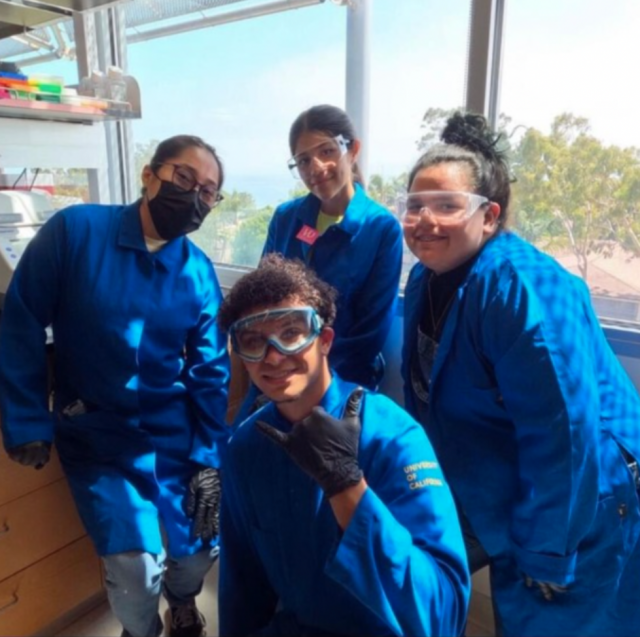Mentor
Bridget Vincent - Department of Ecology, Evolution, & Marine Biology
Advisor
Todd Oakley - Department of Ecology, Evolution, & Marine Biology
Cell Morphology Determines How Light-Interactive Organs Evolved
Interns
Lilet Martinez - Chemistry
Adan Maxwell - Biological Sciences
Emely Valdez - Ecology and Evolution
Emily Valladeres - Cell and Developmental Biology

Project Description
The world is full of diverse and complex traits (those controlled by multiple genes) including camera-like eyes and glowing organisms. Since thousands of organisms produce light, understanding how individual animals produce light and how they evolved this ability remains an open research area. This glow is often studied at the molecular level, but we can also study it at other levels of biological organization such as the cell, tissue, and organ level. By using these different levels, we can better understand how complex traits evolve. Among the thousands of bioluminescent (or glowing) animals, cephalopods have a huge diversity of light-producing organs used to find mates, catch prey, communicate, or camouflage. However, how these organs evolved is still unknown. Previous studies suggest at least one type came about as a combination of existing tissues. We can begin to see if this idea is true or if light organs evolved in other ways by comparing the cell morphology and composition (type and number) across cephalopod tissues. This project will start to explore the differences between these tissues and begin to build a baseline knowledge of cell compositions across organs. You will learn how to work with museum specimens, prepare samples on microscopy slides, stain tissues, and image these slides with fluorescence microscopy.
Project Files
